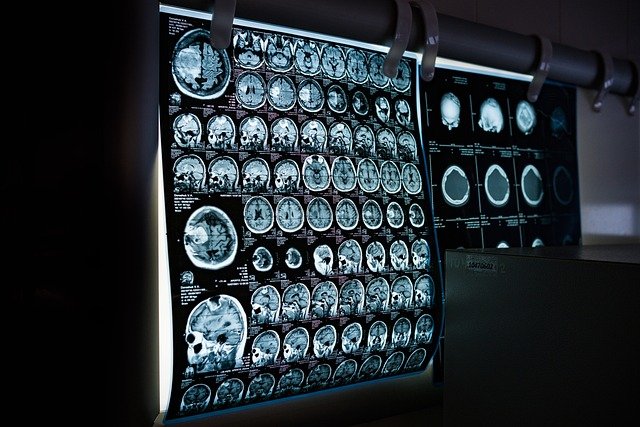Triple Negative Breast Cancer: Key Symptoms and Early Signs
Triple Negative Breast Cancer (TNBC) is an aggressive form of breast cancer that does not respond to common hormone therapies. This article explains the main symptoms and early signs, reviews treatment considerations, and highlights the importance of awareness for women’s health.

Triple negative breast cancer, often abbreviated as TNBC, accounts for approximately 10 to 15 percent of all breast cancer diagnoses. Unlike other breast cancer types, TNBC cells lack three common receptors: estrogen receptors, progesterone receptors, and HER2 protein. This absence makes the cancer more challenging to treat with hormone therapy or targeted drugs, but early recognition of symptoms can significantly improve treatment outcomes and prognosis.
Understanding the early warning signs and physical manifestations of TNBC is crucial for prompt diagnosis and intervention. While some symptoms overlap with other breast cancer types, the aggressive nature of TNBC means that any concerning changes should be evaluated by a healthcare professional without delay.
Common Signs and Physical Symptoms of TNBC
The physical symptoms of triple negative breast cancer often mirror those of other breast cancer subtypes. The most frequently reported sign is a new lump or mass in the breast tissue, which may feel firm or hard and is typically painless. These lumps often have irregular edges rather than smooth, rounded borders. Changes in breast size or shape may occur, with one breast appearing noticeably different from the other.
Skin changes represent another important category of symptoms. The breast skin may become dimpled, puckered, or develop a texture resembling an orange peel, medically known as peau d’orange. Redness, scaling, or thickening of the nipple or breast skin can also signal underlying issues. Nipple changes warrant attention as well, including inversion, discharge (particularly if bloody), or persistent pain in the nipple area.
Swelling in the breast or surrounding areas, even without a distinct lump, should prompt medical evaluation. Some individuals experience persistent breast pain or tenderness, though TNBC is often painless in its early stages. Enlarged lymph nodes under the arm or near the collarbone may indicate that cancer cells have spread beyond the breast tissue.
Early Indicators That May Signal TNBC
Triple negative breast cancer tends to grow and spread more rapidly than other breast cancer types, making early detection particularly important. Subtle changes that might seem insignificant can be early indicators of TNBC. Any new breast lump, regardless of size, deserves medical attention, especially if it appears suddenly or grows quickly over weeks or months.
Changes in breast contour or symmetry, even without a palpable lump, can serve as early warning signs. Some individuals notice a feeling of fullness or heaviness in one breast that differs from the other. Unexplained breast swelling or warmth may precede more obvious symptoms. Skin irritation or itching that persists despite typical skincare measures should not be dismissed.
Because TNBC often affects younger women and those with BRCA1 gene mutations, individuals in these categories should be particularly vigilant about breast changes. Regular self-examinations and familiarity with normal breast tissue help in identifying deviations from the baseline.
Understanding Risk Factors and Prevention
Several factors increase the likelihood of developing triple negative breast cancer. Age plays a role, with TNBC more commonly diagnosed in women under 40 compared to other breast cancer types. African American and Hispanic women face higher rates of TNBC than women of other ethnic backgrounds. Genetic mutations, particularly BRCA1, significantly elevate risk, making genetic counseling valuable for those with family histories of breast or ovarian cancer.
Obesity and lack of physical activity have been associated with increased breast cancer risk overall, including TNBC. While prevention strategies cannot eliminate risk entirely, maintaining a healthy weight, engaging in regular physical activity, limiting alcohol consumption, and breastfeeding when possible may reduce overall breast cancer risk.
For individuals with known genetic mutations or strong family histories, enhanced screening protocols and preventive measures, including prophylactic surgery in some cases, may be recommended. Regular consultation with healthcare providers helps establish personalized risk assessment and screening schedules.
Diagnostic Procedures and Testing
When concerning symptoms arise, healthcare providers employ several diagnostic tools to evaluate breast abnormalities. The diagnostic process typically begins with a clinical breast examination, during which a physician manually checks for lumps, skin changes, and other irregularities. Imaging studies form the cornerstone of breast cancer detection, with mammography serving as the primary screening tool for detecting masses and calcifications.
Ultrasound imaging helps distinguish between solid masses and fluid-filled cysts, providing additional information about suspicious areas identified on mammograms. Magnetic resonance imaging offers detailed breast tissue visualization and is particularly useful for high-risk individuals or when other imaging results are inconclusive.
Tissue biopsy remains the definitive diagnostic method for breast cancer. Various biopsy techniques exist, including fine needle aspiration, core needle biopsy, and surgical biopsy. Laboratory analysis of biopsy samples determines whether cancer cells are present and identifies their receptor status, confirming whether the cancer is triple negative.
Once TNBC is diagnosed, additional tests assess cancer stage and spread. These may include blood tests, chest imaging, bone scans, and other studies to evaluate whether cancer has metastasized to distant organs.
Treatment Options and Approaches
Triple negative breast cancer treatment typically involves a multimodal approach combining several therapeutic strategies. Surgery represents a primary treatment component, with options including lumpectomy, which removes the tumor and surrounding tissue while preserving most of the breast, or mastectomy, which removes the entire breast. Lymph node evaluation during surgery helps determine cancer spread and guides subsequent treatment decisions.
Chemotherapy plays a central role in TNBC management due to the cancer’s inability to respond to hormone therapy or HER2-targeted treatments. Chemotherapy may be administered before surgery, called neoadjuvant therapy, to shrink tumors and improve surgical outcomes, or after surgery as adjuvant therapy to eliminate remaining cancer cells and reduce recurrence risk.
Radiation therapy often follows surgery, particularly after lumpectomy, to destroy any residual cancer cells in the breast area and reduce local recurrence risk. Treatment planning involves careful calculation of radiation doses and targeted delivery to minimize damage to surrounding healthy tissue.
Emerging treatment options include immunotherapy, which harnesses the body’s immune system to fight cancer cells. Some TNBC patients, particularly those with tumors expressing PD-L1 protein, may benefit from immune checkpoint inhibitors combined with chemotherapy. Clinical trials continue exploring novel therapeutic approaches, including PARP inhibitors for patients with BRCA mutations and other targeted therapies.
Treatment plans are highly individualized, considering factors such as cancer stage, patient age, overall health, genetic profile, and personal preferences. Multidisciplinary care teams, including medical oncologists, surgical oncologists, radiation oncologists, and other specialists, collaborate to develop comprehensive treatment strategies. Supportive care addressing physical and emotional well-being throughout treatment is equally important for optimal outcomes.
This article is for informational purposes only and should not be considered medical advice. Please consult a qualified healthcare professional for personalized guidance and treatment.
Early recognition of triple negative breast cancer symptoms, combined with prompt medical evaluation and appropriate treatment, offers the best opportunity for successful outcomes. Staying informed about risk factors, maintaining regular screening schedules, and seeking immediate medical attention for concerning breast changes are essential steps in breast health management.




